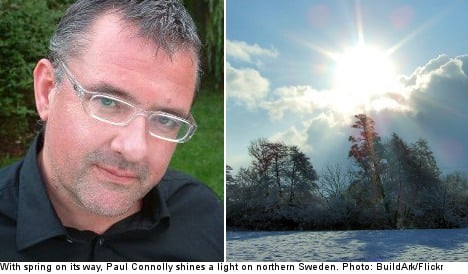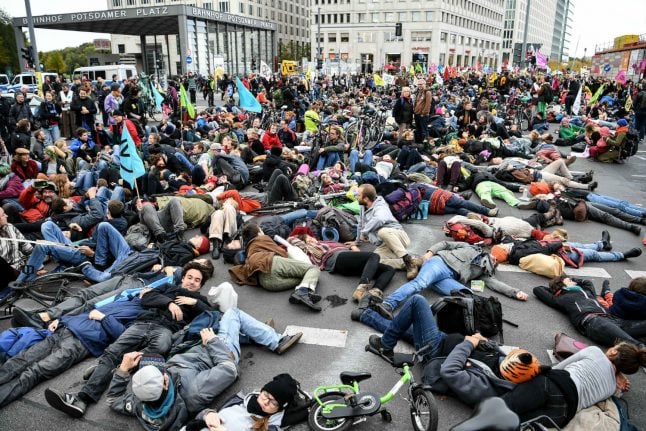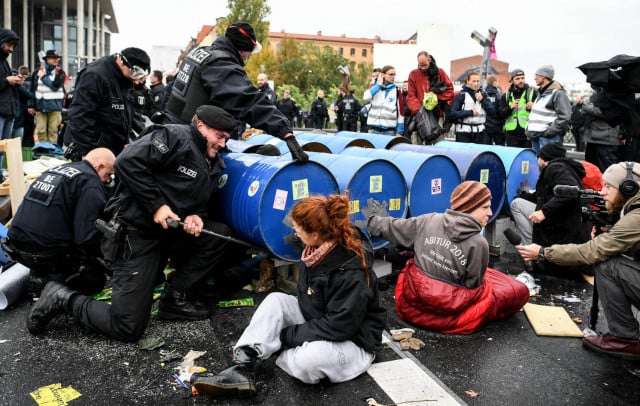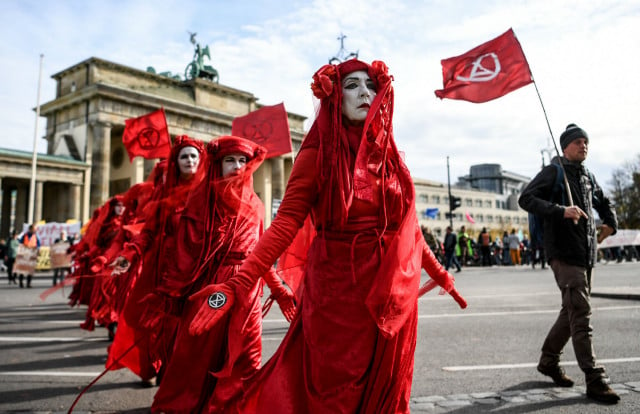I love it when northern Sweden confounds stereotypes. I sometimes think back to the days before we moved here, when friends from Stockholm warned us that northerners were xenophobic and unfriendly and that the north was a very dark place. These stereotypical views were almost entirely incorrect.
The northern Swedes I’ve met have almost all been of a liberal, inclusive sort – they talk about how they welcome new cultures. One of my older neighbours, a retired engineer, recently said, “We need new blood here – new culture means freshness and vitality.”
Another, a teacher, agrees. “A people cannot be strong without new people and new culture – diversity is good for us. Otherwise we just stand still.” Of course, you can’t extrapolate from the views of a few but the fact remains: I have heard no derogatory comments about foreigners at all. Not one. So much for the racist north.
Another hoary old stereotype has also been totally blown out of the water recently. At the end of February, the days quickly started to become much longer and brighter. By the second week of March we were being awoken at 5.15am by the daylight streaming in to our room (we’re mid-renovation and blinds are not yet an option).
At this time of year the days are already 35 minutes longer here than in Stockholm and more than an hour longer than in my old home town, London. Northern Sweden is an incredibly bright place to live for at least seven months of the year. Another stereotype bites the dust.
On to stereotype three; unfriendliness. I’ll admit it now – making friends has been difficult. “Ah, the unfriendly northern Swedes strike again,” I hear some of you say. Well, yes, and no.
Our neighbours are very friendly. Already we’re quite close to at least two of our neighbours – we pop round to watch the hockey, they come round for fika. We’ve also become friends with the older couple from whom we bought our house. The local townspeople are very friendly too. We’re always greeted with a smile in the local Coop grocers or the hardware store. But we have not made many friends outside of those who live immediately adjacent to us. Indeed we have made only two friends who don’t live in our village or who used to live in our village.
Why is this? Are people put off by my size and brashness? Do they really harbour secret xenophobic thoughts towards us? Are northern Swedes essentially quite unfriendly? I can’t honestly say that any one of these reasons is invalid. You can never really know for sure. However, there is one very obvious factor that is hampering our efforts to make new friends. There are no pubs or bars up here, certainly not in rural areas.
There’s no central place for people to meet to socialize. Everywhere I’ve ever lived, from London to Ireland, the pub has been a social hub, somewhere you pop in for a quick drink on the way back from work or where you meet up with other local folk for a beer and a chat. Not up here it isn’t.
Our nearest pub is a 50 minute drive away in a big town. There’s a local(ish) pizza joint in a small town but it’s shut by 8pm. Seriously, no wonder younger people (and I’m talking about those in their late teens and twenties) head straight for cities when they’re old enough. There’s no social life in the countryside – why would you stay?
We’ve even been told that dinner invitations are not “done”, that they’re not very common up here. We’ve been informed that the only place to meet new people is at social events revolving around children, that kids offer people a chance to socialize. We don’t have kids, however. Not yet, anyway.
But a solution to our social isolation could soon be upon us. Donna is pregnant with twins. Our days as social pariahs may soon be at an end. Give praise for the little ones!
Paul Connolly
Read more from Paul here, including his Northern Dispatch column





 Please whitelist us to continue reading.
Please whitelist us to continue reading.
Member comments